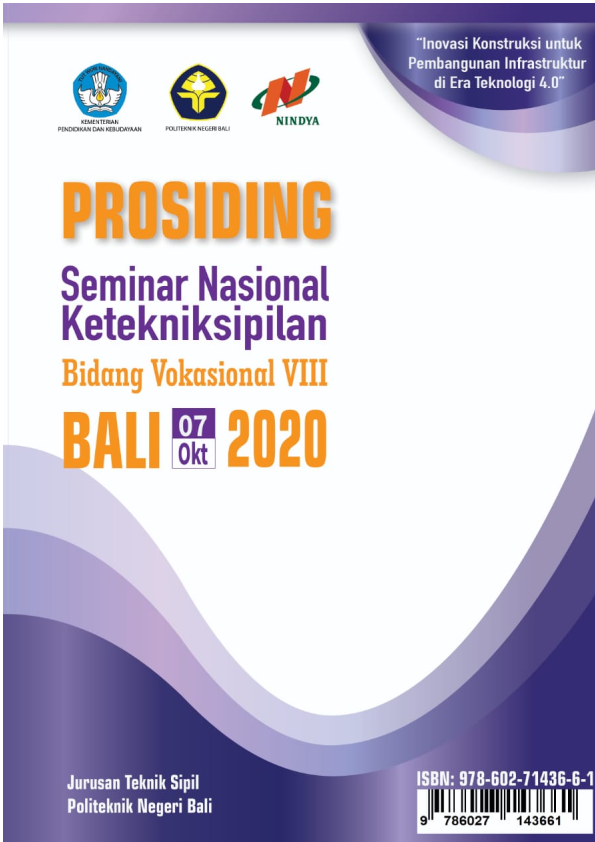ANALISIS TATA LETAK FASILITAS PENDUKUNG PROYEK MENGGUNAKAN METODE MULTI OBJECTIVE FUNCTION (Studi Kasus : Proyek Pembangunan Gedung D, F dan G RSUD Mangusada Badung)
Abstract
In the preparatory work, there is a Site layout plan that must be planned properly, one of which is by
using the multi-objective function method with the aim of getting the best site layout form by producing
the minimum value of the Traveling distance (TD) and the Safety index (SI).
The type of research used is quantitative with unequal sites where there is an empty area that can be used
as a transfer of facilities by minimizing the traveling distance and the risk of accident hazards (Safety
index) and conducting exchange and transfer scenarios of facilities.
Three scenarios were made by comparing with the existing conditions. The results in scenario 0 the TD
value was 14,920.54 and the SI value was 626.04. In Scenario 1, the TD value of 14,862.78 decreases by
-57.76 or -0.58 percent, the SI value of 612.72 decreases by -13.32 or -0.13 percent. In Scenario 2, the TD
value of 14,157.82 decreases by -762.71 or -7.63 percent, the SI value of 621.77 decreases by -4.26 or -
0.04 percent. In Scenario 3, the TD value of 14,958.9 increases by 38.36 or 0.38 percent, the SI value of
620.29 is said to decrease by -5.75 or -0.06 percent.
The scenario that has the minimum value based on the Traveling distance (TD) value is in scenario 2,
while the value based on the Safety index (SI) is in scenario 1.


